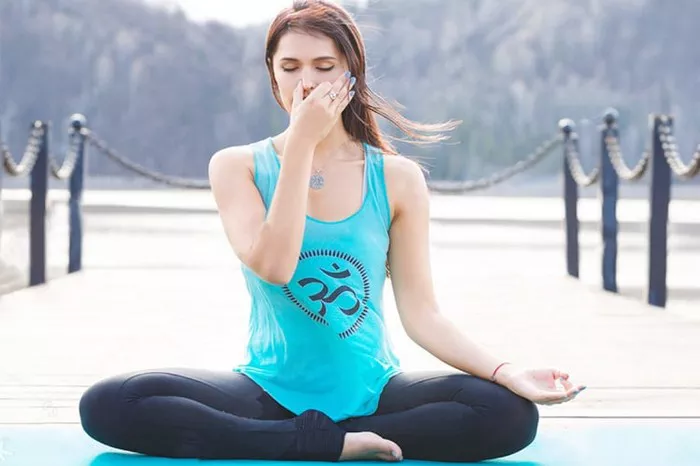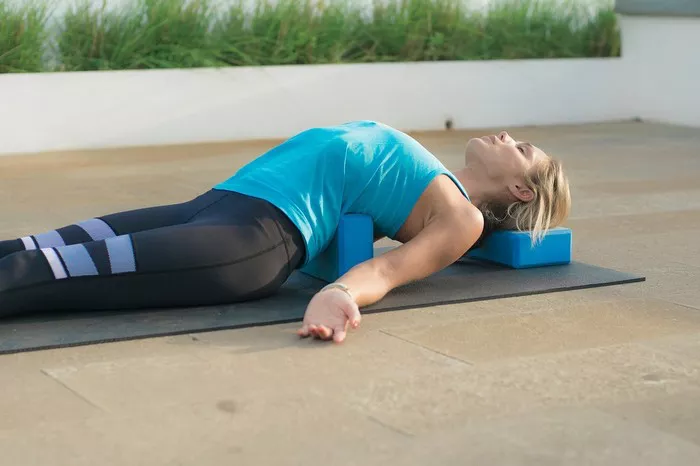Iyengar Yoga, named after its founder B.K.S. Iyengar, is one of the most popular forms of yoga practiced worldwide. Its uniqueness lies in its emphasis on precise alignment, the use of props, and a focus on holding poses for extended periods of time. This approach not only allows practitioners to explore the physical postures in greater depth but also helps to create a more accessible practice for individuals of all levels. Whether you are a beginner or an experienced yogi, Iyengar Yoga offers a variety of physical, mental, and emotional benefits. In this article, we will explore the effects of Iyengar Yoga and how it can positively impact your overall health and well-being.
1. Improved Flexibility
One of the most well-known benefits of practicing Iyengar Yoga is its ability to enhance flexibility. The method encourages practitioners to gradually ease into each asana (yoga pose), focusing on correct alignment and breath. The use of props such as blocks, straps, and blankets helps facilitate deeper stretches, making it possible to access more challenging postures. By holding the postures for an extended period of time, practitioners allow their muscles to lengthen and release tension, which leads to improved flexibility over time.
Whether you are looking to increase flexibility in your hamstrings, hips, shoulders, or back, Iyengar Yoga offers a systematic approach to stretching. The practice encourages steady, mindful engagement with each stretch, which enhances your body’s ability to open up and release stiffness. Many individuals find that regular practice of Iyengar Yoga helps them achieve greater mobility and flexibility in areas that have been tight or restricted for years.
2. Increased Strength and Muscle Tone
While flexibility is one of the primary focuses of yoga, strength and muscle tone are also important outcomes of Iyengar Yoga practice. Each asana requires you to engage specific muscle groups, often targeting deep stabilizing muscles that are not commonly activated in other forms of exercise. In Iyengar Yoga, there is a strong emphasis on the alignment of bones, joints, and muscles, which helps to build strength from the inside out.
The use of props also plays a significant role in strengthening the body. Props such as blocks, bolsters, and chairs allow practitioners to support their bodies in more challenging poses, while still engaging the muscles to hold the position. This can be particularly helpful for individuals with limited strength or flexibility. As practitioners hold poses for longer periods, their muscles are worked to the point of endurance, which helps develop both strength and muscle tone.
For example, poses like Downward-Facing Dog (Adho Mukha Svanasana) and Warrior I (Virabhadrasana I) not only stretch the legs, hips, and spine but also activate the core, arms, and legs, building strength in these areas. The increased time spent holding postures also builds muscular endurance, helping practitioners develop a deeper sense of body awareness and strength.
3. Better Posture and Alignment
One of the core principles of Iyengar Yoga is the focus on proper alignment in every posture. Alignment refers to the way your body is positioned in relation to gravity and the floor. In Iyengar Yoga, this principle is emphasized more than in many other styles of yoga, as the belief is that proper alignment is the foundation for a safe and effective practice. When alignment is correct, the body can move with greater ease and efficiency, reducing the risk of injury.
Through regular practice, Iyengar Yoga helps to improve postural habits. Many of us have developed poor posture due to prolonged sitting, standing, or repetitive movements in our daily lives. Iyengar Yoga’s detailed approach to alignment encourages practitioners to develop more awareness of how they hold their bodies in various positions, leading to better posture both on and off the mat. By learning to align the body properly, practitioners can experience less strain on the joints and spine, and ultimately, prevent discomfort or injury.
Furthermore, the use of props in Iyengar Yoga aids in achieving proper alignment. Props help practitioners maintain stability and balance in poses, especially for beginners or those dealing with injury or physical limitations. For example, using a chair in a forward bend can help lengthen the spine and release tension, facilitating proper alignment without strain.
4. Enhanced Mental Clarity and Focus
While Iyengar Yoga is often associated with physical benefits, it also offers significant mental and emotional advantages. The focus on alignment, precise movements, and breath control requires deep concentration. This focused attention helps calm the mind and bring awareness to the present moment. The meditative aspect of Iyengar Yoga creates a mental state of clarity and stillness, making it easier for practitioners to quiet the mind and let go of distractions.
Regular practice of Iyengar Yoga can enhance mental clarity by improving concentration and mindfulness. The discipline of holding poses for several minutes allows practitioners to cultivate patience, as they learn to stay present with each sensation and breath. This level of attention and concentration is not only beneficial during practice but can also carry over into daily life, improving focus in other activities such as work, study, or creative endeavors.
Additionally, the breath-centered approach to Iyengar Yoga—known as pranayama—helps regulate the nervous system, promoting relaxation and reducing stress. By focusing on long, deep breaths, practitioners activate the parasympathetic nervous system, which calms the body and mind. Over time, this can help reduce symptoms of anxiety, improve sleep, and promote a greater sense of inner peace.
5. Relief from Chronic Pain and Tension
For individuals suffering from chronic pain, tension, or discomfort, Iyengar Yoga can be a therapeutic and healing practice. The alignment-based approach, along with the use of props, helps to support the body in postures that alleviate strain and tension. Poses that promote relaxation and open the chest, hips, and back can relieve common areas of discomfort caused by poor posture or repetitive movements.
People with back pain, neck pain, or shoulder tension often find relief through Iyengar Yoga, as it helps to align the spine and release muscle stiffness. The slow, methodical approach to movement allows practitioners to move safely and mindfully, without pushing the body beyond its limits. This creates a therapeutic environment where the body can heal gradually over time.
In particular, Iyengar Yoga is beneficial for people with conditions like scoliosis, arthritis, and sciatica. By using props and adjusting postures to suit the individual’s needs, Iyengar teachers can guide students in finding a practice that alleviates pain while building strength and flexibility. Many practitioners report a significant reduction in chronic pain after consistent practice.
6. Increased Balance and Coordination
Balance and coordination are integral aspects of Iyengar Yoga. The practice involves standing poses, inversions, and other postures that require the practitioner to balance on one leg or support their body weight in various ways. These poses strengthen the legs, core, and stabilizing muscles, which improves overall balance and coordination.
The emphasis on alignment also helps improve proprioception, or the body’s awareness of its position in space. Through the use of props and precise instructions, Iyengar Yoga allows practitioners to become more attuned to how their bodies are positioned in relation to the floor and gravity. This heightened body awareness translates into better coordination, whether it’s maintaining balance in a yoga pose or performing daily activities with greater ease.
For older adults or those with conditions that affect balance, such as osteoporosis or neurological disorders, Iyengar Yoga can be particularly beneficial. By safely strengthening the muscles involved in balance and teaching individuals how to engage those muscles consciously, the practice can reduce the risk of falls and improve mobility.
7. Stress Reduction and Emotional Healing
In today’s fast-paced world, stress has become a pervasive issue that affects many aspects of our physical and mental health. Iyengar Yoga provides a powerful tool for managing and reducing stress. By focusing on mindful movement, alignment, and breath, practitioners can activate the body’s relaxation response, lowering levels of cortisol (the stress hormone) and promoting a sense of calm.
Additionally, the practice of Iyengar Yoga encourages emotional healing. The detailed focus on each posture allows practitioners to connect with their bodies and emotions in a deeper way. By observing sensations and feelings that arise during the practice, individuals can release stored tension and negative emotions. This emotional release can lead to greater self-awareness, emotional resilience, and a sense of inner balance.
Conclusion
In summary, Iyengar Yoga offers a wealth of benefits for both the body and the mind. From enhanced flexibility and strength to improved posture, mental clarity, and emotional healing, the practice has the potential to transform your overall health and well-being. Whether you’re looking to relieve chronic pain, reduce stress, or cultivate greater balance and coordination, Iyengar Yoga provides a safe and effective way to achieve your goals. Through its precise alignment, use of props, and focus on mindful breathing, Iyengar Yoga can be a powerful tool for cultivating long-term health and wellness.
Related Topics:















